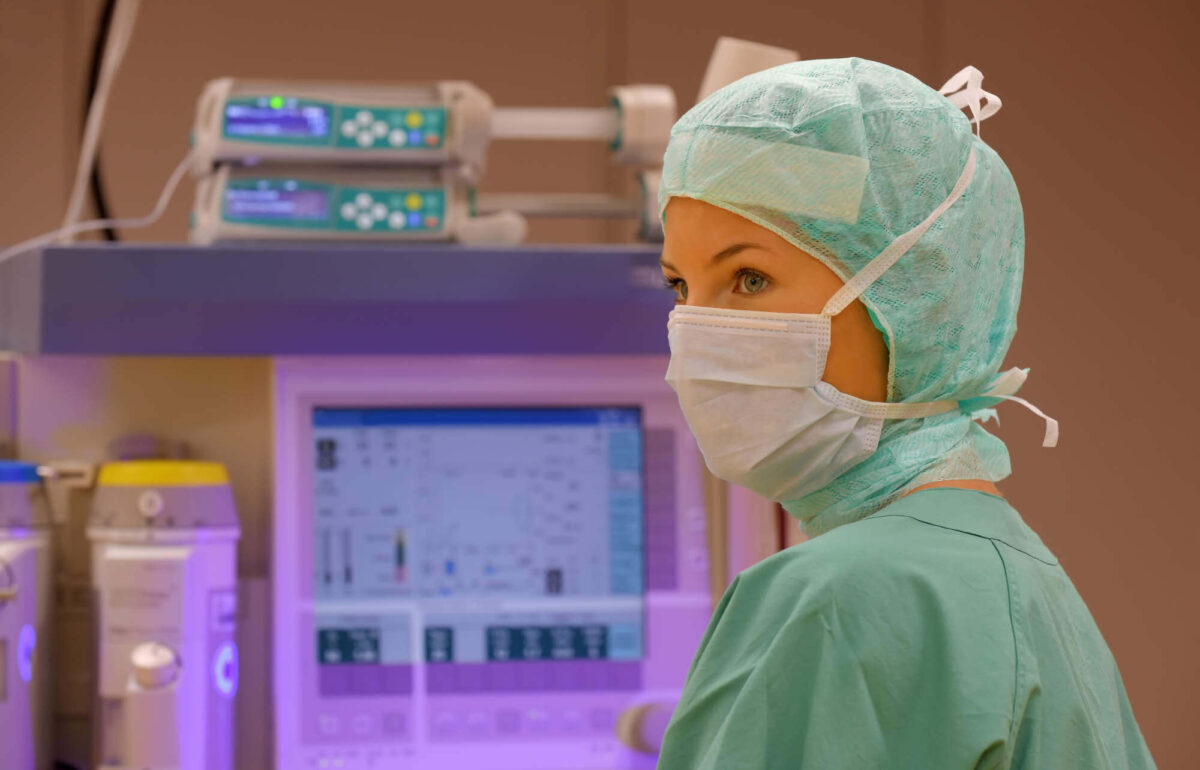In 2020, only 10.4% of medical school graduates were underrepresented minorities, despite comprising at least 33.4% of the United States population [1, 2]. Similarly, about 50% of the population are women, but women represented only 41% of medical school graduates [2]. This diversity issue is exacerbated among anesthesia professionals. Anesthesia professionals encompass people across a wide variety of roles, including nurse anesthetists, physician anesthesiologists, and anesthesiology fellows. Across these categories, women and non-white, non-Asian minorities remain even more underrepresented [2].
Only 25% of the overall anesthesiology workforce is female [2]. The deficit of female involvement in the field is notable in several venues, from anesthesiology residencies to academic Grand Rounds [2, 3]. This exclusion from the opportunity to present one’s work inhibits women’s ability to advance in the field, perpetuating the problem [2]. In 2006-2007, women represented only 18.8% of American Board of Anesthesiology oral board examiners, 14% of full anesthesiology professors, 12.7% of academic anesthesiology chairs, and 10% of all medical school department chairs [4].
Lacking role models and mentors in the field, female medical students, fellows, and residents may be dissuaded or face diminished expectations concerning their career trajectory [2]. Therefore, connecting female anesthesia professionals with other women is important for retention [5]. Studies have also shown that female anesthesiologists are more likely to work part-time, get paid 25% less every year, and work fewer hours each week than their male counterparts [5]. Instituting equal salaries and adjusting workflow within the profession such that it is accommodating for women’s needs would help ensure that women keep climbing up the professional ladder [5].
In terms of underrepresented minorities (including African Americans, Native Americans, and Hispanics, but not Asians), there is an even greater disparity in terms of representation [2]. Compared to the relatively mild 10.4% of minority medical school graduates, the overall anesthesia workforce’s rate of 8.7% minority involvement is dismal [2]. Certain anesthesia professions carry this inequity more than others. For instance, of the 4,851 nurse anesthetists who completed the Academic Association of Nurse Anesthetists’ annual demographic survey, less than 3% identified themselves as an underrepresented ethnic minority [6]. While disparity has diminished since 1990, in terms of graduates from baccalaureate nursing programs and medical schools, growth is slow [2].
The most integral reason for racial inequity in the anesthesia professions is education [7]. The education pipeline in the United States overwhelmingly fails underrepresented minorities, with an estimated one in ten African American students and one in five Latinx students dropping out before completing high school [7]. Scholars suggest that the crucial time to address the problem begins during primary school [7]. Interventions at the high school and college level are also notably beneficial but must be coordinated with broader efforts [7].
The importance of sustaining diversity in the various anesthesia professions will not only serve the aspiration of a more equal society but will likely lead to better patient outcomes in the long-term. For one, exposure to diversity in the field enhances physicians’ cultural competence, such that they become more capable of treating patients from diverse backgrounds [8]. Additionally, because non-white medical professions are more likely to practice in underserved areas, achieving a more diverse workforce will diminish the regional disparities that lead to inadequate care for certain communities [8].
References
[1] “Quick Facts,” Census Bureau, Washington, DC, USA, July 2019. [Online]. Available: https://www.census.gov/quickfacts/fact/table/US/PST045219.
[2] E. B. Malinzak, A. Thompson, and T. Straker, “Examining Diversity in Anesthesiology Grand Rounds,” ASA Monitor, vol. 84, p. 38-40, May 2020. [Online]. Available: https://pubs.asahq.org/monitor/article/84/5/38/108534/Examining-Diversity-in-Anesthesiology-Grand-Rounds.
[3] P. Toledo et al., “Diversity in the American Society of Anesthesiologists Leadership,” Anesthesia and Analgesia, vol. 124, no. 5, p. 1611-1616, November 2015. [Online]. Available: https://doi.org/10.1213/ANE.0000000000001837.
[4] C. A. Wong and M. C. Stock, “The Status of Women in Academic Anesthesiology: A Progress Report,” Anesthesia and Analgesia, vol. 107, no. 1, p. 178-184, July 2008. [Online]. Available: https://doi.org/10.1213/ane.0b013e318172fb5f.
[5] M. Baird et al., “Regional and Gender Differences and Trends in the Anesthesiologist Workforce,” Anesthesiology, vol. 123, p. 997-1012, November 2015. [Online]. Available: https://doi.org/10.1097/ALN.0000000000000834.
[6] T. M. Durbin, “You’ve Got to be Two, Three Times Better Than Anybody Else: Experiences of Black Nurse Anesthetists in Nurse Anesthesia Education,” University of Tennessee, Knoxville, PhD diss., p. 1-127, May 2020. [Online]. Available: https://trace.tennessee.edu/utk_graddiss/5817.
[7] K. Grumbach and R. Mendoza, “Disparities In Human Resources: Addressing The Lack of Diversity In The Health Professions,” Health Affairs, vol. 27, no. 2, p. 413-422, March/April 2008. [Online]. Available: https://doi.org/10.1377/hlthaff.27.2.413.
[8] J. J. Cohen, B. A. Gabriel, and C. Terrell, “The Case for Diversity In The Health Care Workforce,” Health Affairs, vol. 21, no. 5, p. 90-102, September/October 2002. [Online]. Available: https://doi.org/10.1377/hlthaff.21.5.90.









